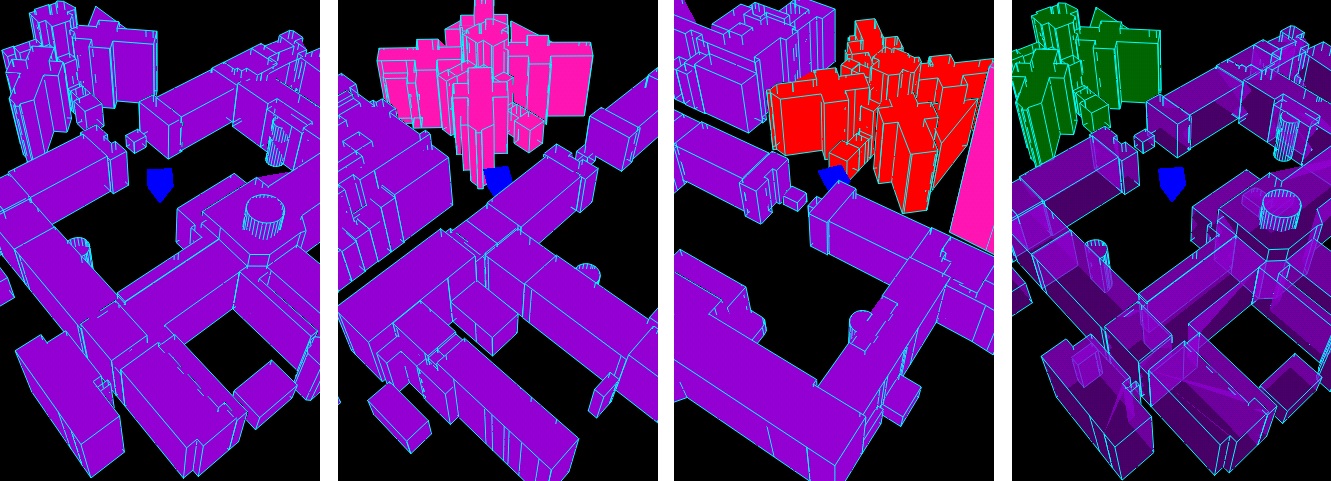Mobile Games
A pervasive location based mobile game
A 2011 VEIV EngD Group Project by Adam Davis, Yotam Doron, Kazim Pal and Pan Ye

The purpose of the project was to design and implement a pervasive location-based, mobile-phone game, which makes use of three-dimensional map data of London. Location-based mobile applications typically do not have access to such data, and only use a two-dimensional map. This limits the useful- ness of the application and the types of interaction that are possible. For example, augmented reality applications such as Layar, which overlay geo-located points of interest onto the phone’s camera feed only make use of the user’s position and the position of the point of interest. They don’t know anything about the geometry of the environment, and thus will often display information that is of limited use, and can sometimes be misleading. For example, with no knowledge of the environment geometry, it is impossible to know what the user can actually see from their position, and what is obscured from their view. One of the aims of this project is to use knowledge of the three-dimensional geometry of London, to perform line-of-sight computations between player locations, as well as provide three-dimensional visualisations of the game.
The framework developed in this project is only possible due to recent advances in mobile technology, such as the widespread adoption of 3G internet and the development of smartphones powerful enough to render 3D graphics and perform 3D mathematical operations. Prior to the development of these technologies, an application such as ours would require a specialist piece of hardware, to serve as the mobile client. A few such platforms have been developed, such as the Gizmondo in 2005, but have not been well-received and would not offer a very large user base. However, modern mobile phones provide us with the perfect platform for our application, since they are powerful enough to perform all the necessary computation, widespread enough to provide a substantial user base, and come with a readymade infrastructure such as 3G internet, and App Stores for distributing the application to users